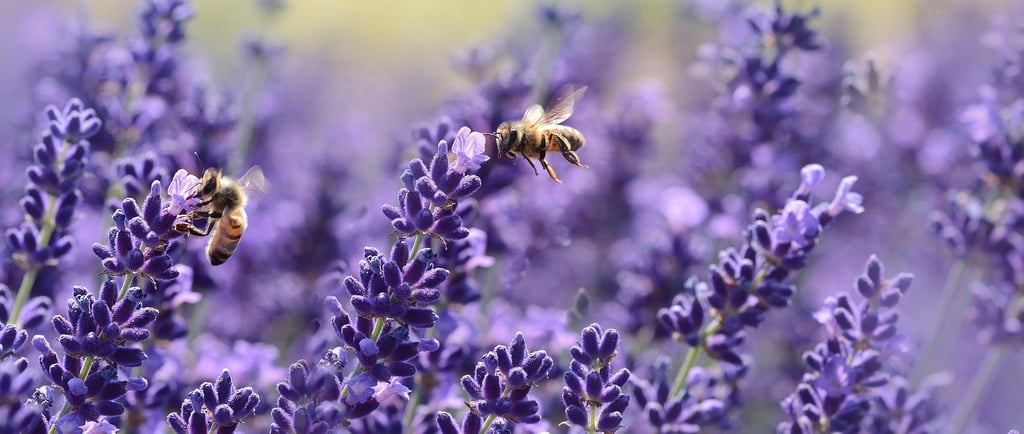🛁 From Baths to Beehives 🐝 Lavender Legends💜
🌸 A follow-up story that connects The Flower chapter in the Biology Album with the Fundamental Needs chapter in History Album. 🐝🌍 This story highlights a beautiful discovery: the way lavender meets both the ecological needs of pollinators and the cultural needs of humans. Through this story, children are introduced to a unique floral arrangement called whorls, and witness how plants serve multiple roles in human life—not just as food, but as medicine, fragrance, textile care, and even protection from insects. 🌿✨ The story gently introduces the diverse ways humans have used plants throughout history. It invites children to wonder: 💭 “What other plants offer both beauty to nature and usefulness to people?”
BIOLOGY STORIES
7/15/20253 min read


In the warmth of summer, when the meadows hum with life, there is a plant that brings joy to both bees and humans. Meet lavender (👏 la 👏 ven 👏 der)—a fragrant flower, a healing herb loved by humans for centuries, and a summer feast for pollinators. 💜🐝
If you spot a soft purple shimmer in the summer meadows or fields, look closely at its tall, slender stems. The tiny purple blossoms don’t grow all at once—they grow in little groups called whorls, forming a beautiful spiral staircase climbing up the green stalk. 🌿🌸 From the bottom, where the earliest flowers bloom, to the very top where tiny buds are still waiting to open, lavender turns its stem into a ladder of blossoms.🍯🐝 It’s a bee buffet! If you stop quietly by a blooming bush, you’ll see honeybees, bumblebees, and butterflies hovering joyfully. Lavender’s open blossoms make it easy for these tiny visitors to sip nectar while helping pollinate the plant. 🦋🐝
Humans have always admired this buzzing purple buffet. A long time ago in Ancient Rome, people would sprinkle lavender into their bath water. The word lavender comes from the Latin lavare, meaning “to wash,” because it made their baths smell fresh and their minds feel calm. 🛁💧 In Ancient Egypt, scientists found that lavender was placed in tombs , maybe was part of rituals and ceremonies?
In the castles and cottages of medieval times, lavender had many roles: 🪑 People polished wooden furniture with lavender oil to make their homes smell fresh—especially helpful when daily bathing was uncommon! 🛌 Farmers tucked lavender under pillows to ward off nightmares and invite sweet dreams.
🍪🍵 In kitchens, lavender flavored both sweet and salty dishes. People stirred it into breads, desserts, and stews, adding a gentle floral taste to meals. 🍽️
For healers ,lavender was the “soothing flower.” It became oils for rubbing sore muscles, poultices for wounds, and calming teas for headaches and worries. 💜🌿 Even today, people turn to lavender oils to help them relax, lavender sprays to freshen rooms, and lavender creams to comfort their skin. 🌬️💆♀️
Lavender also had a clever job: guarding clothes from pesky moths! . 🐛People learned to hang bunches of dry lavender inside closets. The strong, sweet smell we love—moths really don’t! Lavender became nature’s gentle guardian for cozy sweaters and blankets. 🧺✨
But lavender’s talents don’t stop there! In some regions around the world, people use lavender in natural cleaning and healing products because its oils. In the world of natural dyes, lavender flowers once gave pale purple shades for fabrics. And in traditional festivals, lavender bundles were carried like small magic wands—symbols of peace, love, and protection. ✨💐
In gardens today, lavender continues to be a plant of friendship—feeding the bees, protecting clothes from mischievous moths, and filling homes with its soft, sweet scent. After blooming, lavender’s tiny seeds hide inside the dry blossoms, light enough to dance on the wind—no parachute needed! Off they go, carried by the breeze to find another place to grow.
In some countries, lavender fields stretch as far as the eye can see—rolling purple hills that smell like sunshine and calm. 🌄💜 Maybe you can find which country produces the most lavender oil today? 🗺️🔍
💭 I wonder… Bees love lavender, but what insects stay away from its strong smell? Could we make a little lavender pouch to keep mosquitoes away? 🦟💨 I wonder also… what other flowers grow their blossoms in beautiful whorls, climbing up the stem like a spiral staircase? Could we find some in our gardens, or maybe during a nature walk? 🌸🔍
✨ Follow-Up Explorations
🪴 Observe lavender flowers and how pollinators behave—who visits the most?
🌍 Make a world map: where is lavender grown the most today? To which countries is exported?
🖼️ Create lavender art - Collect lavender flowers and use them for gentle printing or watercolor painting.
🌸 Make Lavender Sachets - sew small cloth pouches, fill them with dried lavender and tie them for calming bedtime sachets or to freshen wardrobes.
🧴 Lavender Oil Infusion : 🥥 1 cup of coconut oil +🌸 ½ to 1 cup of dried lavender flowers (feel their soft texture, smell their calming scent) Close the jar and place it on a sunny windowsill. 🌞 The warmth from the sun will help infuse the fragrance gently. Give the jar a little gentle shake or swirl once a day and watch how the oil changes.After 1–2 weeks, strain out the lavender flowers using a strainer or cheesecloth. 🌞 Observe and Discuss: How does the smell change over time? How does the oil look in the sunshine? Invite children to research for what we can use it?
💭 I wonder… What other plants can we infuse into oil?
With Montessori joy,
Vanina 😊

